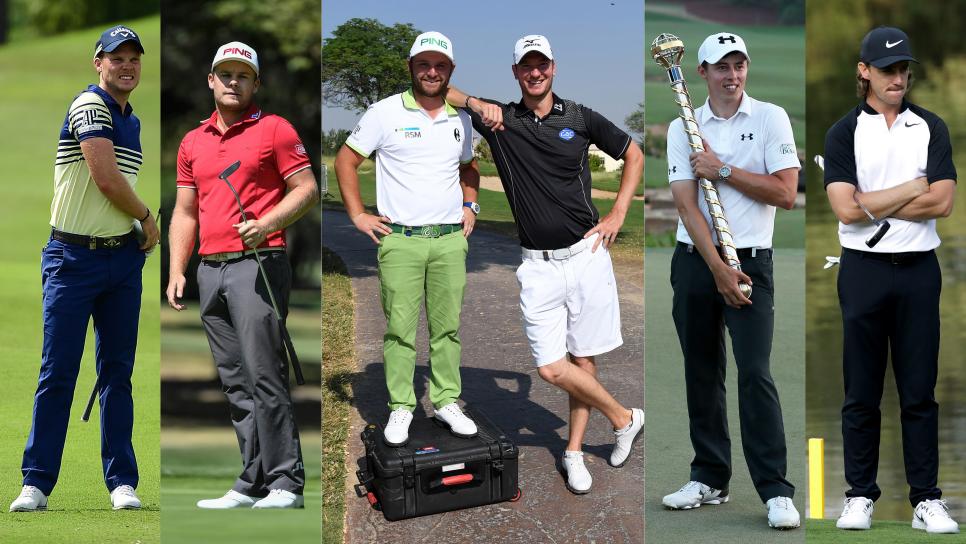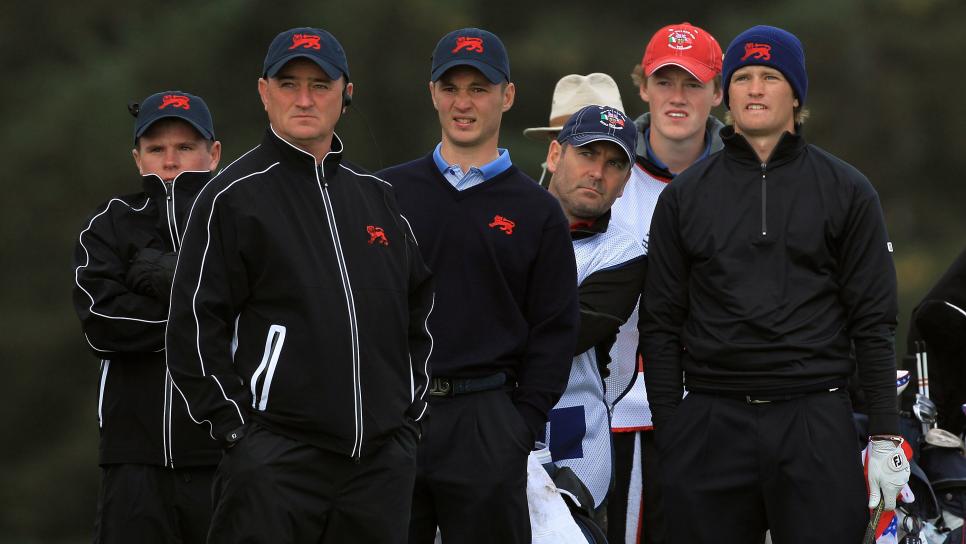News
How England is becoming a golf power once again

As recently as 2002, there was a Masters in which the field included only two Englishmen—Nick Faldo and Lee Westwood. Next month at least five times as many players will compete under the flag of St. George at Augusta National in the year’s first major. That’s more than perennial powerhouses Australia (four) and South Africa (five) combined. Even more significantly, seven of the 10 English invitees—Tyrrell Hatton, Matt Fitzpatrick, Andy Sullivan, Chris Wood, Tommy Fleetwood, Scott Gregory and defending champion Danny Willett—are 30 or younger.
All of which will come as no surprise to those taking note of a continuing trend on the European Tour. At the end of the 2015-’16 season last November, more than 20 percent of the 111 exempt players identified by the Race to Dubai were English. More and more, the Home of Golf’s nearest neighbor is dominating the game in the Old World.
Clearly, someone somewhere is getting something right, a fact that has not escaped the attention of close observers. Former Great Britain & Ireland Walker Cup captain Peter McEvoy, whose eponymous annual under-18 tournament routinely attracts the most talented youngsters from across the British Isles, is prominent among those with increasingly awareness of a huge change for the better since the turn of the century.
“There was a time when I would see any number of bad grips and stances on the first tee at my junior event,” says the two-time British Amateur champion. “The lads who stood to the ball properly and swung the club well were very much the exceptions. Now, I stand there and everyone has a good technique. Every one of them. The coaching at grass roots level is clearly much improved.”
Partly responsible for this happy development is another former Walker Cup skipper, Nigel Edwards. Since 2011 the Welshman has been England Golf’s Director of Coaching.
“We have a really focused program, especially when they get to the national level,” Edwards says. “We send players all over the world and use our funds very diligently. But that is just the end product of what we do. From the bottom up, we try to create something that is both inspirational and aspirational. For example, we have something called the ‘A squad,’ which sits between the developmental squads and the national squads. Because there are so many players coming through the clubs and the counties, it would otherwise be easy to miss some of them. The A squad plugs a gap.”
It’s not all about the amateur game though. Support is also given to fledgling male and female tour players through the England Golf Giveback Agreement. Last year, money went to the Bridgestone Challenge, an English Challenge Tour event. In return, three Englishmen received seven starts on the Challenge Tour and four amateurs played in the Bridgestone. The Ladies European Tour’s Access Series, a developmental tour akin to the Symetra Tour in the U.S., also received a cash boost. Through that players got invitations to LET and Access events. “In that way, we try to bridge the gap between the amateur and pro games,” Edwards says.

David Cannon/R&A
The end result is that, by their late teens, English players are increasingly mature in a golfing sense. Because they have been prepared so well in amateur golf, their period of adjustment to the professional game is shorter. Contrary to a conventional pattern among previous generations, Ryder Cup player Sullivan is one who stayed at home rather than taking up the offer of a college scholarship in America.
“The education part of college golf didn’t appeal to me,” Sullivan says. “Besides, I was pretty much a fulltime amateur in the England system. I didn’t need to go to America to develop my game.”
Along with coaching and systems, the renaissance has been fed by a culture that encourages the sheer innate desire to beat everyone else. Sullivan, a former supermarket shelf stacker, benefitted hugely from being part of a gifted and highly motivated group of direct contemporaries. As did Wood, the BMW PGA champion and another of the five Englishman who made the European Ryder Cup team at Hazeltine last year.
“At all the England Golf training camps I went to there was always competition, on and off the course,” Wood says. “I really wanted it and put the hours in. So did Danny Willett. We were always first in the gym at 6:30 in the morning. Nothing was an issue. Looking back now, it was so obvious. If I had been on the outside looking in, I would have picked up on the fact that we were a little different. We wanted it more. I was trying my guts out, and I’m sure Dan was the same. He pushed me, and I hope I did the same for him.”
Strangely, for all the growing success of English players, the same cannot be said of Scotland and Wales, the other constituent parts of Great Britain. Albeit each has a relatively small population and fewer resources, both have struggled recently to produce successful tour players. Only five Scots and two Welshmen gained exemption off last year’s Race to Dubai and neither nation was represented in the last Ryder Cup side.
For now at least, England is both bigger and better.